2 Best Cars for Eat Belts and Airbags
Overview
Airbags are one of the most important safety innovations of recent decades.
- Airbags provide crucial cushioning for people during a crash. They're normally hidden but inflate instantly when a crash begins.
- Front airbags have been required in all new passenger vehicles since the 1999 model year.
- Side airbags aren't specifically mandated, but nearly all manufacturers include them as standard equipment in order to meet federal side protection requirements.
Both front and side airbags save lives.
- Front airbags reduce driver fatalities in frontal crashes by 29 percent and fatalities of front-seat passengers age 13 and older by 32 percent (Kahane, 2015).
- Side airbags that protect the head reduce a car driver's risk of death in driver-side crashes by 37 percent and an SUV driver's risk by 52 percent (McCartt & Kyrychenko, 2007).
Engineers keep finding new ways to use airbags.
- Rear-window curtain airbags are designed to protect people in back seats in rear-end crashes.
- Far-side airbags keep drivers and front-seat passengers from hitting each other in a crash.
- Inflatable safety belts are aimed at reducing rear-seat chest injuries.
Latest news
Knee airbags show little benefit
Knee airbags are increasingly common in passenger vehicles, but new IIHS research shows they have a negligible effect on injury risk.
August 7, 2019
Better restraints needed in back seat
A new study of crashes in which belted rear-seat passengers were killed or seriously injured suggests better restraint systems are needed.
April 25, 2019
How front and side airbags work
Airbags are inflatable cushions built into a vehicle that protect occupants from hitting the vehicle interior or objects outside the vehicle (for example, other vehicles or trees) during a collision.
The instant a crash begins, sensors start to measure impact severity. If the crash is severe enough, the sensors signal inflators to fill the bags with gas in a fraction of a second.
Airbags don't typically require maintenance unless they deploy in a crash. In that case, they must be replaced at a repair shop that uses original equipment manufacturer (OEM) replacement parts to ensure that the new airbag is not counterfeit. Counterfeit airbags may fail to deploy or release metal shrapnel during deployment.
Front airbags
Since the 1999 model year, the federal government has required automakers to install driver and passenger airbags for frontal impact protection in all cars, light trucks and vans.
Front airbags are designed to inflate in moderate to severe frontal crashes to prevent a person's head and chest from contacting hard structures in the vehicle.
They offer the most protection when occupants are wearing safety belts and sitting properly in the seat but are designed to provide protection for all occupants.
Newer airbags have a safety belt sensor and use an algorithm to decide whether to deploy the bag in a given crash, depending on whether people are using safety belts.
Typically, a front airbag will deploy for unbelted occupants when the crash is the equivalent of an impact into a rigid wall at 10-12 mph. Most airbags will deploy at a higher threshold — about 16 mph — for belted occupants because the belts alone are likely to provide adequate protection up to these moderate speeds.
Front airbags may deploy to help protect occupants in side impacts if there is sufficient forward movement during the crash.
The driver airbag is located in the steering wheel. The passenger airbag is located in the dashboard.
Some manufacturers provide supplemental knee airbags, mounted lower. Knee airbags are intended to distribute impact forces to reduce leg injuries. They may also help reduce forces on an occupant's chest and abdomen by controlling movement of the occupant's lower body.
Side airbags
Head- and chest-protecting side airbags are designed to inflate in side crashes to prevent people's heads and chests from contacting intruding parts of vehicle side structure, a striking vehicle or an object such as a tree or pole. Side airbags cushion and spread the load of impacts to prevent any part of the body from sustaining concentrated impact forces.
A head-protecting side airbag is particularly important because it may be the only thing between the occupant's head and the striking vehicle, since window glass can shatter in a crash.
Because of the small space between an occupant and the side of the vehicle, side airbags must deploy very quickly, typically within the first 10-20 milliseconds of a side crash. Deployment thresholds can be as low as 8 mph for narrow object crashes (e.g., trees and poles) and 18 mph for the more widely distributed side impacts (vehicle-to-vehicle crashes). Side airbags also deploy in certain types of frontal crashes.
A federal regulation on side-impact protection requires a certain level of head and torso protection for all occupants. While it doesn't specifically mandate side airbags, the required protection is typically achieved with them. As of the 2014 model year, virtually all new passenger vehicles must comply with this regulation. As a result, the vast majority of passenger vehicles come with side airbags as standard equipment.
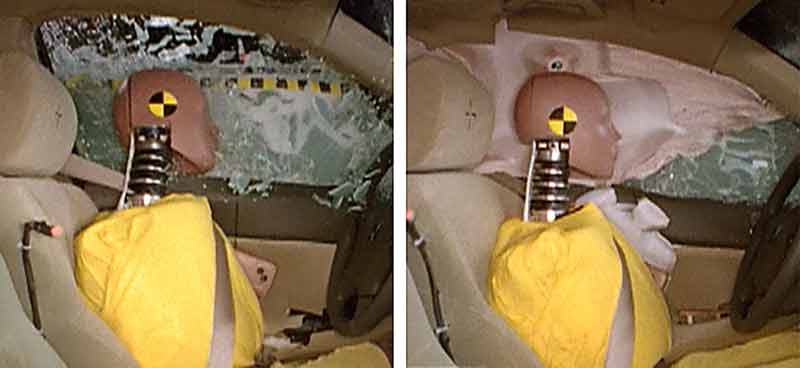
Different types of side airbag systems
Rollover deployment of side airbags
Side curtain airbags can be designed to deploy in a rollover crash. Sensors that measure a vehicle's sideways movement and tilting can detect if a rollover is about to occur, triggering deployment. These airbags typically inflate within the first 10-20 milliseconds of a rollover crash and can remain inflated longer than regular side curtain airbags (10 or more seconds) to protect during multiple-roll crashes. They typically cover the window opening and inflate more stiffly to prevent ejection of the occupant.
The government doesn't specifically require side curtain airbags with this capability, but automakers have been using them to meet a requirement that all 2018 or newer vehicles prevent occupant ejection through side windows.

Lives saved by airbags
NHTSA estimates that as of 2017, 50,457 lives have been saved by frontal airbags (National Center for Statistics and Analysis, 2020).
In frontal crashes, front airbags reduce driver fatalities by 29 percent and fatalities of front-seat passengers age 13 and older by 32 percent (Kahane, 2015). NHTSA estimates that the combination of an airbag plus a lap and shoulder belt reduces the risk of death in frontal crashes by 61 percent, compared with a 50 percent reduction for belts alone and a 34 percent reduction for airbags alone.
NHTSA estimates that as of 2012, 2,252 lives have been saved by side airbags (Kahane, 2015).
Side airbags with head protection reduce a car driver's risk of death in driver-side crashes by 37 percent and an SUV driver's risk by 52 percent (McCartt & Kyrychenko, 2007).
A study of crashes in Australia found that side airbags with head and torso protection reduce a car driver's risk of death or injury in driver-side crashes by 41 percent (D'Elia et al., 2013). Similar trends were found in a NHTSA study focusing on the fatality risk to drivers and right-front-seat passenger vehicles involved in nearside crashes. Curtain airbags and torso airbags together reduce the risk of death by 31 percent, and combination head/torso airbags reduce the risk by 25 percent (Kahane, 2014). The death reduction was lower in vehicles equipped only with a curtain airbag (16 percent) or only with a torso airbag (8 percent).
The crucial role played by head-protecting side airbags is illustrated by the results of IIHS side crash tests. Since the program began in 2003, all the vehicles earning good ratings have been equipped with side airbags that protect the head. However, airbags alone aren't enough. Vehicles also need side structures that resist major intrusion into the occupant compartment.
Airbag injuries
Occasionally, the energy required to quickly inflate airbags can cause injury to people sitting or thrown too close to the airbag before it deploys. This was a serious concern with the first generations of frontal airbags, which deployed with greater force.
NHTSA estimates that during 1990-2008, more than 290 deaths were caused by frontal airbag inflation in low-speed crashes (National Center for Statistics and Analysis, 2017). Nearly 90 percent of the deaths occurred in vehicles manufactured before 1998, and more than 80 percent of people killed were unbelted or improperly restrained. Most of the deaths were passengers, and more than 90 percent of those were children and infants, most of whom were unbelted or in rear-facing child safety seats that placed their heads close to the deploying airbag. Short and elderly drivers, who tend to sit close to the steering wheel, also were vulnerable to inflation injuries from frontal airbags.
Today, thanks to changes in government requirements, serious injuries from properly functioning airbags are rare.
The changes came in two phases. In the first, federal rules were modified to encourage automakers to reduce the energy in front airbags. Depowering began with 1998 models. Later, NHTSA issued a certified-advanced airbag rule that required more sophisticated airbags in all passenger vehicles by the 2007 model year.
Advanced airbags modify deployment patterns if weight sensors detect a small driver or front-seat passenger or a child safety seat. Manufacturers must pass a suite of tests using different-size dummies, belted and unbelted, in a variety of crash test speeds and configurations.
Side airbags also can deploy with enough energy to cause injury, although they typically are smaller and deploy with less energy than frontal airbags. Injuries from contact with side airbag inflations in crashes have been documented (Kahane, 2015), but there is no indication that such injuries are common. A field study of children in side crashes found no increased risk of injury to children age 15 and younger associated with side airbag deployment ( Arbogast & Kallan, 2007 ).
Faulty airbags also can injure people. The government issues recalls for vehicles with faulty airbag systems that result in increased risk of injury in a crash. Reasons can include failure to deploy, incorrect timing or energy of deployments, and defective parts. Recalled airbags should be replaced to ensure that occupants receive the optimal level of protection in a crash.
Consumers can find information on recalls affecting their vehicles in the NHTSA recall database. The database also has information on service centers that are authorized to repair recalled vehicles free of charge.
The Takata airbag recall, which began in 2015, is the largest recall in U.S. history, with an estimated 70 million vehicles to be recalled by 2019. The problem that prompted the recall has been tied to 15 confirmed deaths in the U.S. and more than 250 reported injuries.
- IIHS-HLDI advisory: A look at the Takata airbag recalls
What can occupants do to prevent injuries from airbags?
- Drivers and front-seat passengers should sit in the center of the seat upright against the seatback with feet on the floor.
- Arms and legs should never be resting against an airbag because the forces of a deploying airbag and the hot gases exhausted by the airbag may cause injury.
- Avoid aftermarket dash or seat covers, which can block or redirect a deploying airbag.
- Drivers should sit with their chests at least 10 inches away from the center of the steering wheel. Shorter drivers who need the seat positioned further forward can often achieve this by slightly reclining the seatback. Many newer airbags take into account seat position and deploy with less force if an occupant is sitting close. For drivers of older vehicles who cannot get far enough away from the steering wheel, pedal extenders or an airbag on-off switch may be an option.
- Young children should sit in the rear seat. If a child does need to ride in the front seat, the seat should be as far back as possible and the child should be securely buckled in a lap/shoulder belt and sitting against the seatback.
- Children shouldn't lean against the door area where the side airbag is stored because the initial deployment force may be harmful. With or without an airbag, children who lean against doors or lie down with their heads near the doors or sides of vehicles are at higher risk of injury in the event of a side impact.
- For women in the late stages of pregnancy, a combination of properly positioned safety belts and airbags offers the best protection. Like other drivers, pregnant drivers should ensure their abdomens are at least 10 inches from the steering wheel. The lap belt should be positioned high on the thighs (ideally on pelvic bones), below the soft part of the abdomen.
Airbag innovations
As technology advances, manufacturers are finding new ways to integrate airbags into vehicles.
Inflatable seat belts
In 2011 Ford rolled out an inflatable seat belt aimed at reducing rear-seat injuries. The inflatable seat belt is intended to enhance protection for adults and for children using booster seats or seat belts alone. In a crash, the shoulder belt inflates, distributing crash forces across the torso and chest.
The inflatable belts are currently available as optional equipment in the outboard second-row seating positions of several Ford and Lincoln vehicles. The Mercedes-Benz S-Class comes with standard inflatable belts.
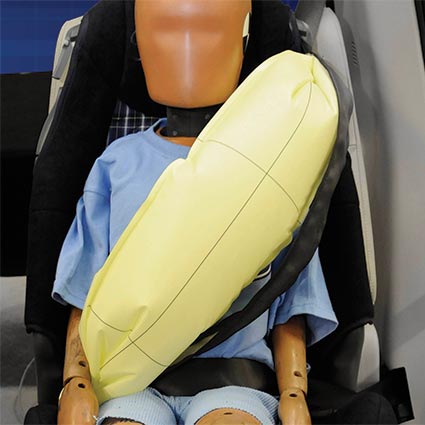
Far-side airbag
Also known as the front-center airbag, the far-side airbag is designed to prevent front passengers from colliding with each other during side-impact crashes and to maintain occupant position in far-side or rollover crashes. General Motors was the first to introduce the front-center airbag in 2013.
Toyota has developed a similar concept aimed at rear-seat passenger protection that deploys from the rear row's center console.
In 2020, EuroNCAP introduced a new side crash test to promote far-side airbags. A far-side airbag is currently available on the Chevrolet Traverse, GMC Acadia, Buick Enclave, Genesis G80 and Genesis GV80.
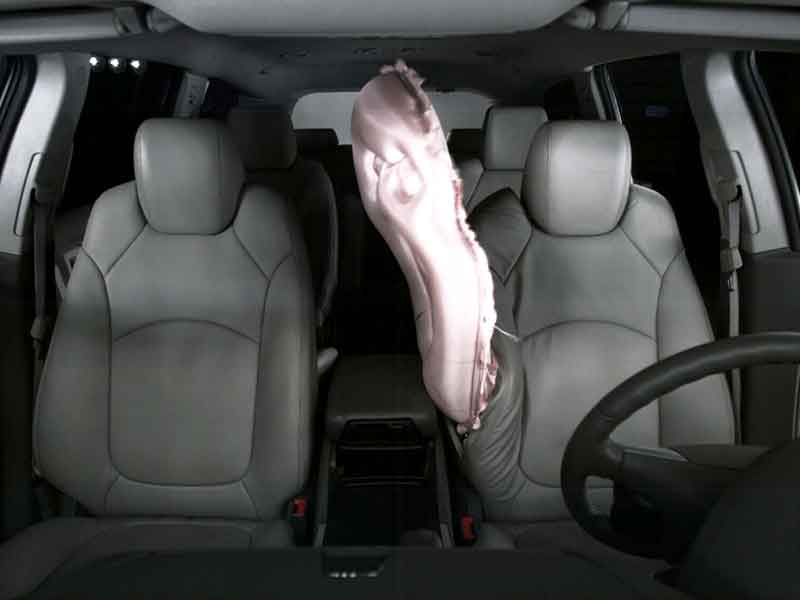
Panoramic sunroof airbag
In 2017, Hyundai Mobis, an automotive supplier, introduced the first panoramic roof curtain airbag. It is intended to prevent ejection of occupants through the sunroof during rollovers.
NHTSA has identified 260 occupants ejected through sunroofs from 2000-2015 and the problem is expected to grow as panoramic sunroofs become more popular.
Many design challenges delayed the implementation of these kinds of airbags in vehicles. The airbag must properly deploy with the sunroof open or closed and be stored in the headliner without interfering with headroom or visibility.
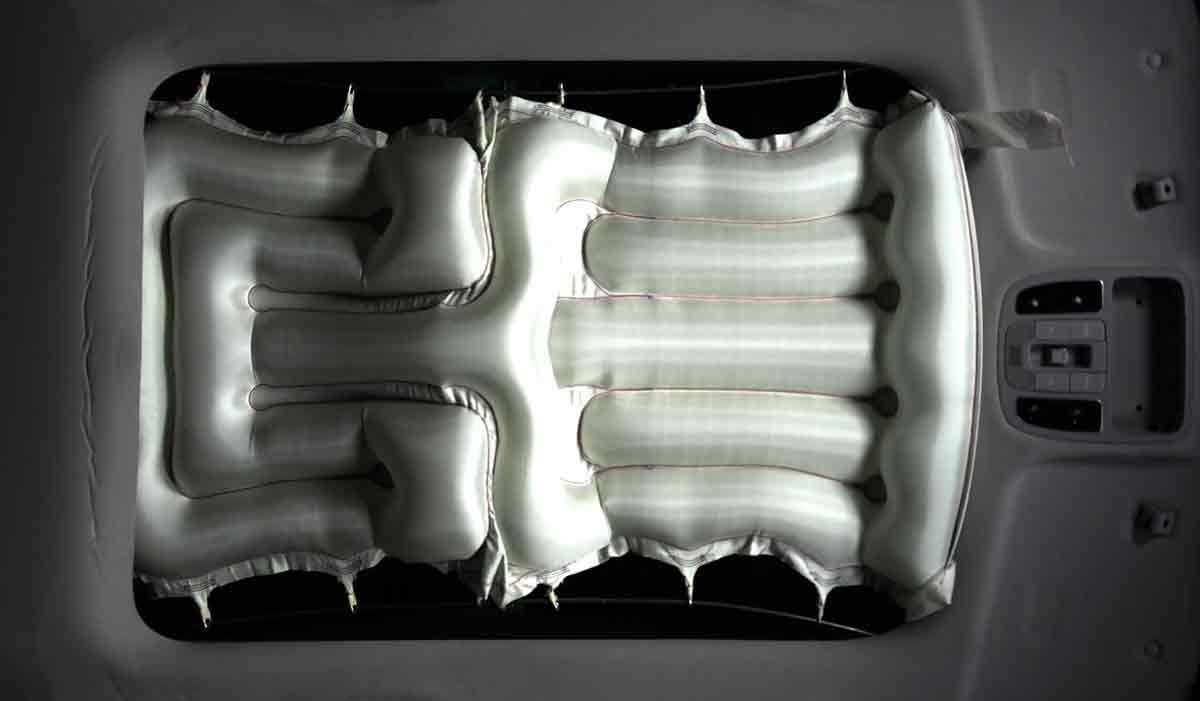
Seat cushion airbag
Seat cushion airbags are designed to reduce forces on an occupant's chest and abdomen by controlling movement of the occupant's body. Currently, the Toyota Yaris comes equipped with a seat cushion airbag.
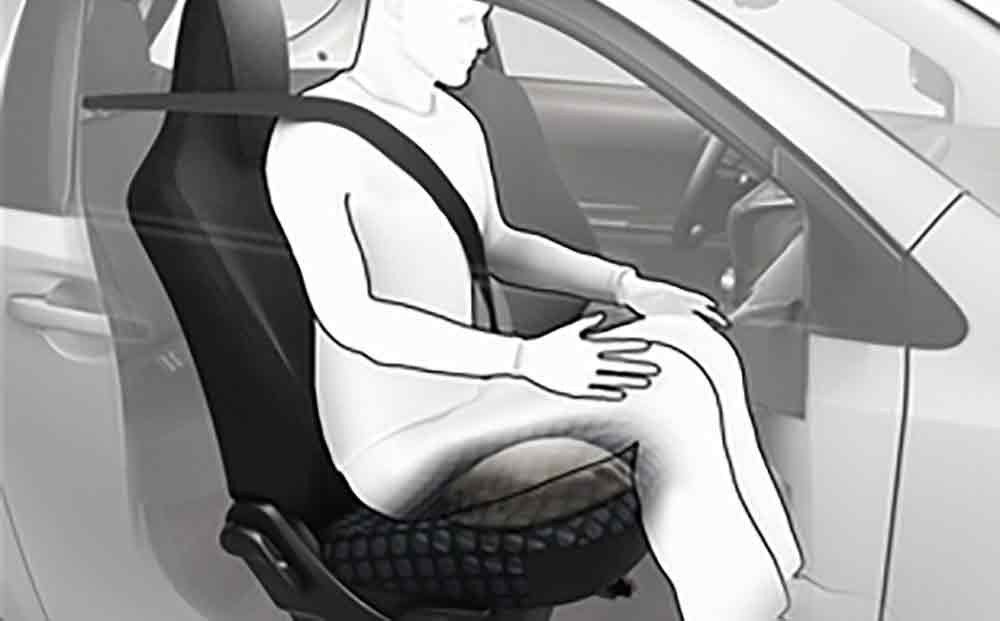
Rear seat airbag
Rear seat airbags are being developed to provide head protection for rear passengers. Rear seat airbags are located in the back of the front seat and deploy with less force than traditional airbags. They are only partially inflated, unlike normal, full-powered airbags, so even if the airbags contact objects or child seats, they deflect instead of striking them. Mercedes-Benz is planning to introduce this optional airbag on the next generation of S-Class.
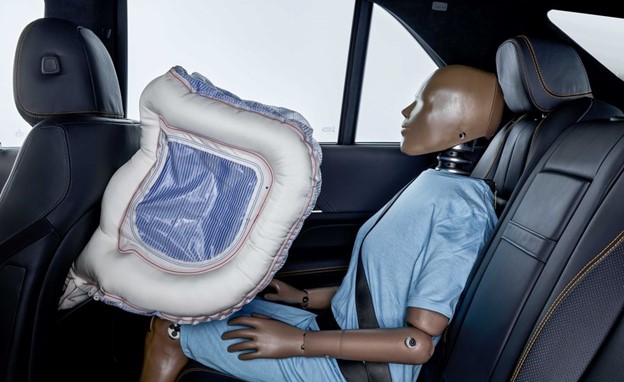
Flexible seating airbag systems
Future vehicles with flexible seating options (reclining seats, campfire configurations, etc.) will require innovative airbag systems for protection. Airbag suppliers are developing seat-mounted airbag systems that provide cocoonlike protection for passengers. Two examples are Autoliv's Life Cell airbag and Joyson's Embrace.
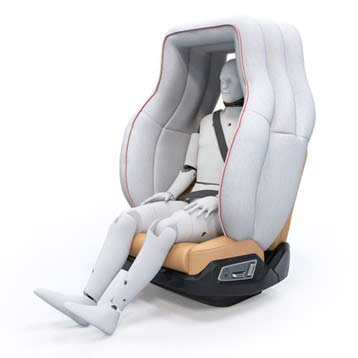
Precrash external side airbag system
The external side airbag, developed by ZF, is designed to reduce crash forces on a vehicle during side crashes. This airbag uses precrash sensors to detect an imminent side impact and deploys a large external airbag from under the side sill of the vehicle to cover the driver and rear passenger doors. When inflated, it is approximately the size of a life raft. There are currently no production vehicles with this technology.
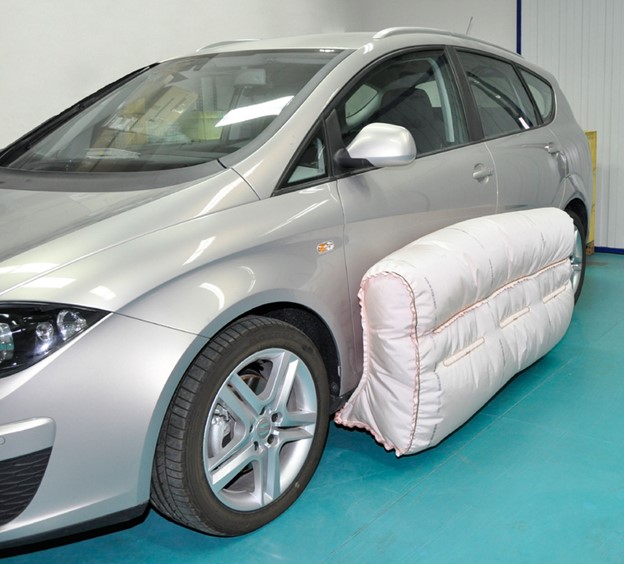
External hood airbag
Volvo developed the first hood airbag designed for pedestrian protection. When a collision with a pedestrian is detected, an external airbag deploys from under the hood and covers the hard parts of the windshield and the A-pillar, locations that pedestrians frequently strike. The pedestrian hood airbag is standard on the Volvo V40, available only in Europe, starting with the 2013 model year.
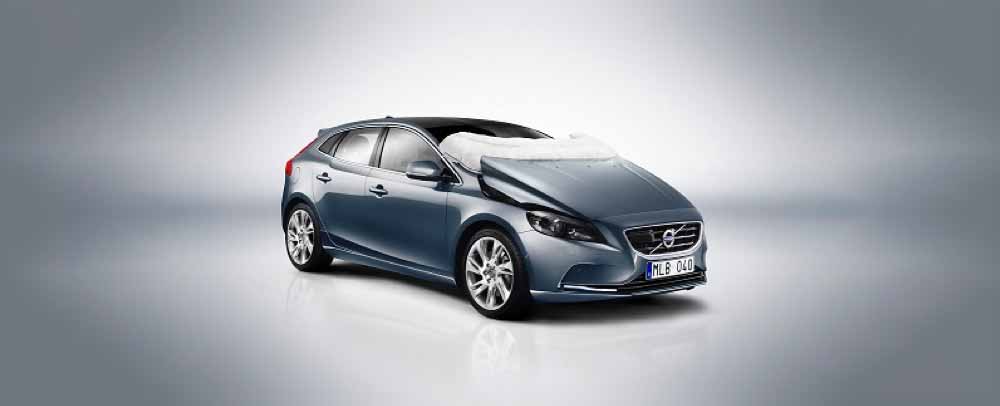
Motorcycle airbag
A frontal airbag is offered as an option on 2006 and later models of Honda's Gold Wing touring motorcycle. Honda's airbag is designed to deploy in severe frontal impacts and absorb some of the forward energy of the driver. No studies have been conducted on the real-world effectiveness of motorcycle airbags.
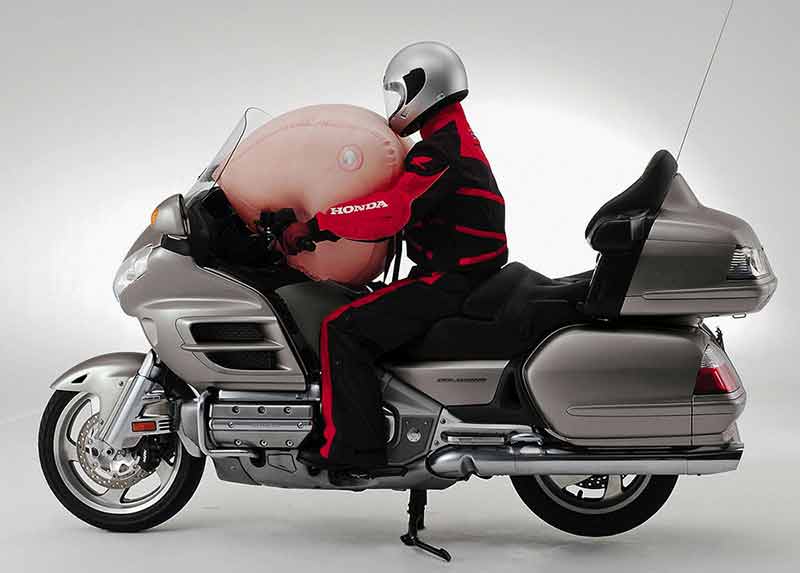
Motorcyclist vest airbag
Wearable crash-activated airbag vests are another option for motorcyclists. The vests, available from several companies, including AlpineStars Tech Air, HitAir, and Helite, are designed to protect the rider's neck, torso, and spine during a crash.
During normal riding, a tether connects the vest to the motorcycle. During a crash event, when the rider and the bike begin to separate, the tether is pulled, activating a CO2 cartridge to inflate the vest within milliseconds. This canister is replaceable, meaning the jacket or vest is reusable.
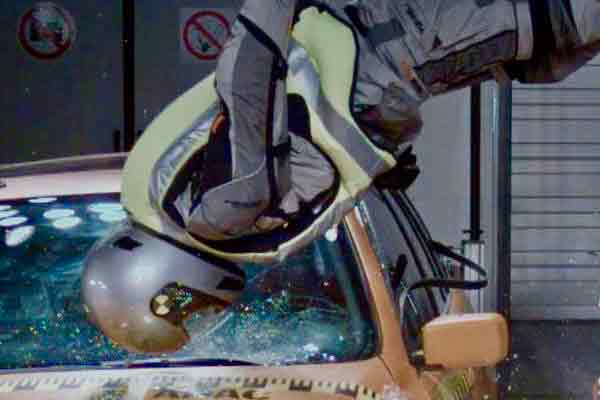
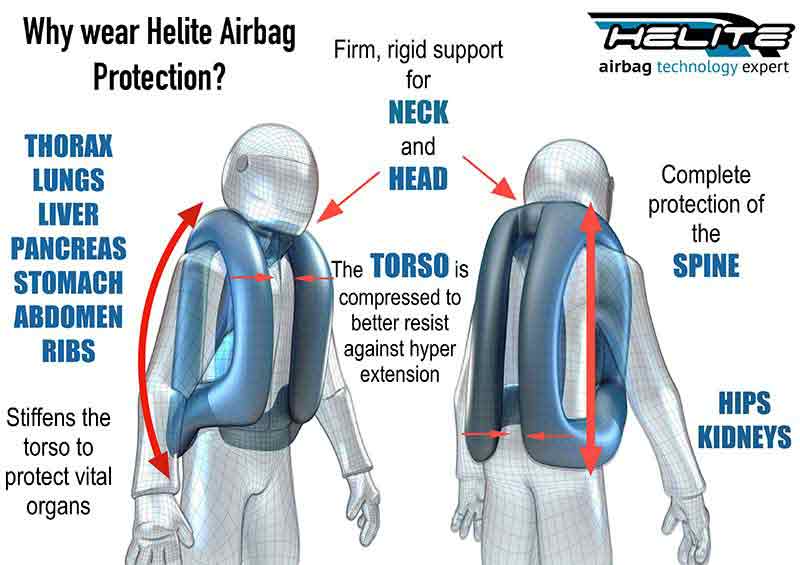
Bicycle helmet airbag
A bicycle helmet airbag has been developed in Sweden by Hovding. The airbag for bicyclists is meant to be used instead of a traditional helmet. It is designed to deploy out of a collar worn around the neck when sensors detect abnormal movement of the cyclist indicating a crash. The airbag deploys in one-tenth of a second.

2 Best Cars for Eat Belts and Airbags
Source: https://www.iihs.org/topics/airbags